A Voice in the Wilderness
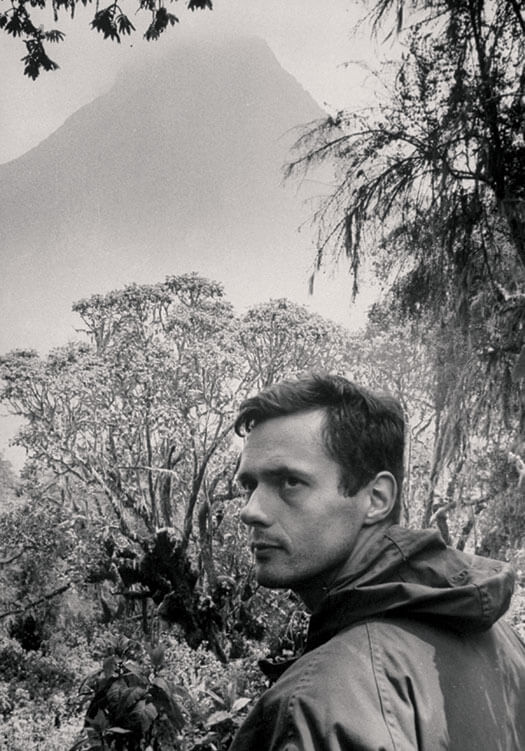
George of the jungle: Schaller first came to prominence for his pioneering study of mountain gorillas in the eastern Congo, circa 1960. Photo: Terrence Spencer/Time&Life Images/Getty
He lived among the apes before Fossey and Goodall. He helped create Alaska’s Arctic National Wildlife Refuge, and he wrote pioneering studies of pandas, tigers, and snow leopards. He may be the world’s leading ecological missionary. So why haven’t you heard of George Schaller?
George Schaller PhD’62 is the proverbial voice crying out for the wilderness — or he would be, if there were such a proverb. In deserts and highlands, classrooms and boardrooms, he repeats his clarion call: Leave high the mountains and crooked the paths! There are wonders to be found in nature, and they must be protected!
This is a paraphrase, of course. Schaller dislikes pompous turns of phrase.
For half a century, Schaller has spent his life in the world’s remotest regions — high in the volcanoes of central Africa, in the jungles of south Asia, on the Tibetan plateau, in the steppes of Mongolia, or deep in the Brazilian rainforest — seeking rare and beautiful animals, describing them, and finding ways to protect them.
Now at seventy-six, he still spends more than half of each year conducting field studies, or speaking before audiences in Europe, Asia, or across the United States. When he’s at his home in Connecticut, he’s usually at work, writing articles or books, meeting with potential donors, or traveling into New York City to meet with one of the organizations that employ him: the Wildlife Conservation Society (where his title is senior conservationist) or Panthera, an organization devoted to protecting the world’s big cats (where Schaller is vice president).
“I’m not big on titles,” Schaller says, and when he describes himself, he usually uses the more general term field biologist, a scientist who goes into the wild to study the habits and characteristics of creatures where they live. Jokingly, he describes himself as a feral biologist. But in recent years, he’s used the term ecological missionary, which might be the title that fits best: he journeys to foreign lands, he teaches, and he preaches conservation.
Schaller’s work has earned a vast array of awards: the World Wildlife Fund’s gold medal, the international Society for Conservation Biology’s 2009 Distinguished Service Award, a 1973 National Book Award, Japan’s International Cosmos Prize, and China’s Environment Prize. The National Geographic Society made a film about him called Nature’s Greatest Defender. (“I hate that title,” he says.) And he’s collected a wide following of disciples, including scientists (such as Dian Fossey and Jane Goodall), celebrities (Michael Crichton, author of Jurassic Park and other science fiction novels, declared Schaller his hero; author Peter Matthiessen wrote about traveling with Schaller in his book The Snow Leopard), and teams of field biologists in virtually all of the countries where he’s conducted research.
George Schaller may be the most influential person you’ve never heard of, if you judge by the number of species whose fate he’s influenced. The anonymity would probably be fine with him — except for that missionary zeal to spread his message. The following four lessons are drawn from that message, taught by a life spent in the field.
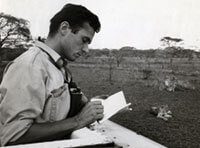
Schaller takes notes while observing lions in the Serengeti. In the early years, his wife and sons accompanied him during lengthy overseas projects, including this three-year stretch in the 1960s, living in northern Tanzania. Courtesy of George Schaller.
Paul had his road to Damascus; Buddha had his bodhi tree. Schaller’s moment of enlightenment — at least in the cause of conservation — came in Alaska’s Sheenjek River Valley.
Not that he was a reluctant convert.
“I can’t really say when I first became interested in animals and the out-of-doors,” he says. “As far as I can remember, I’ve never been interested in anything else.”
Born in Berlin in 1933 to a German father and an American mother, Schaller spent much of his youth in the German countryside, fleeing the destruction of the Second World War. In 1947, he emigrated to St. Louis, Missouri, with his mother and brother, and lived there until attending college at the University of Alaska in Fairbanks. The selection was as much whim as plan, as all Schaller knew of Alaska was a quick quip from a cousin who was an alumnus.
“He told me, if you like the outdoors, they’ve got a lot of it there,” Schaller says. But the choice proved providential. During college, Schaller read the work of UW professor Aldo Leopold, one of the country’s leading thinkers in wildlife ecology. Schaller still rates Leopold’s Sand County Almanac as “one of the best conservation works ever written.”
And he found that tramping about in the wilderness and chasing after animals could be the basis of a career. “I discovered that what you do as a hobby and for fun can be a profession,” he says.
This lesson came far outside the classroom, and not from a faculty member. In the summer of 1956, while on break between semesters, Schaller became a disciple of Olaus Murie, then America’s most prominent field biologist.
A friend and correspondent of Aldo Leopold, Murie was a legend among conservationists in the 1950s. As an official with the U.S. Fish and Game Service, president of the Wilderness Society, and director of the Izaak Walton League, he had authored half a dozen works of field biology and had lobbied for the preservation and enlargement of several national parks and the creation of Jackson Hole National Monument.
In 1956, Murie and his wife, Mardy, led an expedition to explore northern Alaska’s Sheenjek River Valley, a largely untracked wilderness along the north slope of the Brooks Range. With them, they took biologist Brina Kessel and graduate students Bob Krear and George Schaller.
Throughout that summer, the group canoed and hiked through the valley, noting its wide variety of birds, tracking the migrations of caribou, and making close examinations — Schaller initially thought too close — of every bit of wolf and grizzly bear scat they came across. They catalogued dozens of species of birds, mammals, insects, and spiders, collected samples of 138 flowering plants and some forty lichens, and provided material for dozens of articles and books — including two of Schaller’s early publications, Arctic Valley (1957) and “New Area for Hunters” (1958).
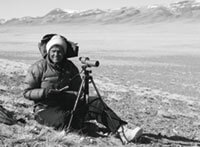
Schaller in the Chang Tang uplands of Tibet — his studies have taken him from northern Alaska to central Africa to the high altitudes of central Asia to the jungles of Indochina and the Amazon. Courteso of Georgr Schaller.
But Murie’s aims were more than scientific — he had a political goal as well. He hoped to win over support for turning northern Alaska into a giant reserve. In July 1956, U.S. Supreme Court justice William O. Douglas visited the expedition’s campsite, and the Muries enlisted him in their cause. With aid from Douglas and others, the couple successfully lobbied President Dwight Eisenhower to establish the nation’s largest nature preserve, the nearly 20 million-acre Arctic National Wildlife Refuge.
That preserve proved to be the most important lesson in Schaller’s collegiate career. His travels with Murie taught him to believe that field biology, without preservation, would be meaningless.
“Right from the beginning, from the work in Alaska, I knew that the basic knowledge of a species I collect has to lead to conservation,” he says. “There’s always a goal beyond getting the life history information on a species — setting up a preserve or a protected area. I mean, what’s the point of writing an obituary about a species?”
The story of wildlife conservation is filled with conflict, so it’s no surprise that Schaller’s half-century of fieldwork contains more than ample illustration of those struggles. Expanding human populations, diminishing resources, and unstable governments all threaten preservation efforts. Even the Arctic National Wildlife Refuge, Schaller’s first pride, is under constant threat of incursion by oil speculators, who would like to expand drilling in the region.
“Fifty years later,” he says, “we’re still trying to keep companies out.”
But Schaller tries not to focus on conflict, as he feels that it’s counter-productive. For instance, while he admires Fossey — the biologist who studied and strove to protect the mountain gorillas of central Africa — he has chided her for her intransigence.

Schaller’s first multi-year field study took him to what was then the Belgian Congo to observe mountain gorillas. He (right) and his wife, Kay, lived in a tiny shack in the Virunga Volcanoes, almost completely cut off from the outside world.
“[Fossey’s] heroic vigil helped the apes endure,” Schaller wrote in 1995. “However, her unyielding confrontational approach with local people, which she termed ‘expedient action,’ ultimately cannot save wildlife. Conservation depends on the goodwill of the local population.”
Schaller learned this lesson while studying those same gorillas, working on his doctorate at the UW.
Much of Schaller’s previous work, including during the Murie expedition, was devoted to birds — to cataloguing the Eurasian species that summered along Alaska’s north slope. His professors at the University of Alaska suggested that he apply for graduate school at the UW, under the direction of zoology professor John Emlen, an ornithologist. Emlen took Schaller on as a student and put him to work studying nestlings along Picnic Point. That research project didn’t last long, but the relationship between Schaller and Emlen proved important.
“That was very fortunate for me,” Schaller says. “[Emlen] was a wonderful person, a fine person, because he not only took an interest in his students; he gave me opportunities that I would never otherwise have had.” The most important of these was the chance to drop his bird research and travel to central Africa to study mountain gorillas in the Virunga Volcanoes.
In the late 1950s, little was known about mountain gorillas, except what could be gleaned from the few specimens brought to the outside world by hunters. Emlen connected Schaller with a National Science Foundation grant to perform an in-depth study of the gorillas, living in the remote, eastern region of what was then the Belgian Congo and observing them daily for two years.
“Gorillas were more interesting to me than birds,” says Schaller, “and Africa was a bigger draw to me than Madison, so I went.”
Newly married, Schaller took his wife, Kay, along for the journey, feeling fortunate that she was excited about the adventure.
“For me it was ideal,” says Kay. “I’d always had a fantasy about living in a log cabin in the wilderness, and here was our chance.”
Between 1959 and 1961, the two built their own little Eden in a tin-roofed wooden shack near Kabara, along the border between the Belgian colonies of the Congo and Rwanda. Schaller was able to habituate the gorillas to his presence, making regular observations of their diet, social structure, and habits, while Kay assisted, cooking their meals from tinned food and “acting as a general gofer.”
The twenty months that the Schallers spent in the Virunga region produced not only George’s PhD dissertation, but also a scientific treatise, The Mountain Gorilla: Ecology and Behavior (1963), which won the Wildlife Society’s award for best terrestrial wildlife publication. It was also the basis for his first popular work, The Year of the Gorilla, published a year later.
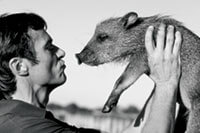
Schaller puckers up for a white-lipped peccary in Brazil in 1977. Schaller was then studying jaguars, the kind of charismatic animal that can be a focus for an entire environment. To protect jaguars, one must also protect peccaries and other species jaguars prey upon.
But these were also twenty lonely months. Separated from the nearest towns by miles of mountains and jungle, the Schallers were almost entirely isolated. The only outside company they had were occasional visits from national park guards. Each month, when the guard detail changed, the new arrivals would bring up mail from home, the Schallers’ only source of news from the outside world — and, it turned out, their only source of news about the Congo, as well.
In 1960, Belgium surrendered its colonial control over the Congo, which quickly descended into civil war. Violence erupted across the country, and soldiers from Belgium and the UN came to try to restore peace.
The Schallers knew none of this. “The first we heard about it was in a letter from my parents,” Kay says. The threat of spreading violence and concern for Kay’s health — she was then pregnant with the Schallers’ first son, Eric PhD’90 — convinced them to abandon their shack in 1960.
They relocated northeastward to the British colony of Uganda, intending to return as soon as peace was restored. “But then things really blew up,” Kay says, and the Congo adventure was over.
During the years that followed, the gorillas suffered as rebel incursions and the region’s changing governments reduced their range.
In Rwanda, for instance, just to the east of Kabara, about 40 percent of the area that had been national park while Schaller conducted his study was turned into agricultural land, and the number of gorillas plummeted from about 450 in 1960 to only around 250 by 1980.
But as the region has regained stability in recent years, the people of Rwanda have taken more pride in their wildlife, and gorilla populations have begun to rebound.
“I’ve been back [to the Virunga Volcanoes] several times in the last few years,” Schaller says, “and they have a dedicated guard force; they’re protecting the forest. They know all the gorillas individually. Tourist money is going to help the [local] communities, and the guards are [willing to] give their lives fighting incursions by poachers and rebels.”
For Schaller, the lesson of this catastrophe and recovery is that conservation is meaningless if the local population isn’t involved. “You have to try to protect the landscape and still maintain the livelihood of the local people,” he says.
In his projects, Schaller emphasizes that his overriding goal is to get local scientists and community leaders emotionally, economically, and professionally invested in protecting wildlife. When local populations are involved, he says, “governments pay attention and it’s easier to promote the work. The thing is, most countries don’t have any wildlife biologists in the field. By going to a country and training local nationals to do the fieldwork, I feel I’m leaving something behind.”
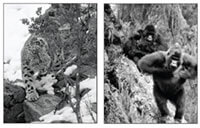
“If you’re going to spend years watching and fighting for an animal, you want to enjoy it,” Schaller says. The animals he most enjoys are charismatic megafauna — that is, animals that are big and beautiful, such as the snow leopard (left), the mountain gorilla (above), (see next photo)
In the years following his departure from the Congo, Schaller proceeded to hop from one exotic location to another to head a series of field biology projects: to India to study tigers; to Tanzania for lions; to the Himalayas for wild sheep and goats; to Brazil for jaguars; to China for giant pandas and snow leopards; to Mongolia for wild camels and Mongolian gazelles and other creatures unique to the steppes; to Laos for rainforest ungulates.
In between, he’s helped to launch conservation projects in Vietnam, Russia, Bhutan, Myanmar, Iran, Tajikistan, and Afghanistan. Along with Panthera colleague Alan Rabinowitz, he discovered that the saola (a forest-dwelling ungulate) was present in Laos, and he’s rediscovered two species — the Vietnamese warty pig and the Tibetan red deer — previously thought extinct.
Where many scientists grow increasingly specific over time — narrowing their focus on the myriad mysteries to be found in a single species or gaining a comprehensive understanding of a particular region — Schaller has grown increasingly diverse. But then Schaller has consistently tried to avoid working like a typical scientist.
“University life is very nice,” he says, but if he had a faculty position, “then I wouldn’t have the freedom to take off. I’d have to wait for a sabbatical or the summers to do it. This way, I can disappear for a couple of years and nobody cares.”
While Schaller gives credit to the important work that university-based biologists do and the ways that technology has advanced the study of wildlife, he maintains that intensive fieldwork is vital for the cause of conservation.
“People are so enamored of technology and DNA that universities spend less and less time teaching natural history,” he says. “And that’s the basis of knowledge. You’re losing generations of people who don’t know much about the outdoors. And unless you go out and study what’s in the field, you can’t plan for conservation that well. You can measure how fast forest is being destroyed, you can measure the biomass of grassland, but you don’t know any details.”
If Schaller’s career has progressed atypically, it’s been the product of luck as much as design — and of very tolerant supporters.
The most important of these, Schaller says, has been Kay, whom he met while both were enrolled at the University of Alaska. “I was extraordinarily lucky [to find her],” he says, “because she likes camping and being overseas for long periods.”
During the early years of his research, Kay — and then their sons, Eric and Mark — followed him into the field while he conducted multi-year studies.
“I was conceived in the Congo,” notes Eric, “born in Madison, and raised in India, Tanzania, and Pakistan.”
It was an exciting life, though not always an easy one, as Kay describes battling tropical diseases and infections with two toddlers and a source of income that was far from secure.
“We’d sort of agreed to live from grant to grant,” she says.
But the grants kept coming, often with the support of the New York Zoological Society, renamed the Wildlife Conservation Society in 1993. It helped to fund the Murie expedition through the Sheenjek Valley as well as Schaller’s doctoral research in the Congo, and it’s supported most of his research projects ever since. And this was perhaps Schaller’s second-most-important lucky relationship.
“After the gorilla project finished, I sort of drifted around,” Schaller says. “I basically drifted into the Wildlife Conservation Society and stuck around, and they gave me considerable freedom for what to do and where.”
Though based in New York, the society supports conservation projects around the globe. Founded in 1895, it has been working to advance preservation efforts for more than a century, but its era of greatest growth — the 1960s and 1970s — coincided with Schaller’s early career work, and the two experienced a parallel rise in prestige.
With a devotion to field research, the society currently sponsors projects in fifty-three nations, and Schaller has had a role in founding or supporting many of them.
“The important thing is that others have carried on my work,” he says. “I can do the basic behavior study [on a species] and get some useful insights. But conservation is a process. It’s not an end goal within itself.”
Schaller has studied many different animals over the course of his career — big cats and antelopes, primates and pandas — and at first they may seem to have nothing to do with one another, biologically or geographically. But what unites these disparate species is that they’re all big and beautiful, creatures that he calls charismatic megafauna.
“The original Greek meaning for charisma refers to a gift of grace, which these animals certainly have,” he says. “And as for megafauna — well, they’re big.”
Schaller contends that there’s more to charismatic megafauna than their looks — or maybe that there’s more to them because of their looks. They’re also extremely useful for conservation because they draw a high level of publicity and sympathy — people connect with them emotionally.
“They’re beautiful, they’re interesting, and they’re fun to watch,” he says. “They draw the attention of the public and of governments. They draw money.”
And money, Schaller knows, is the vital ingredient in any conservation project. It pays scientists and funds their research. It buys land for parks and pays rangers and guards to staff them. “It’s easy to be corrupt when you’re poor,” he says.
By focusing on protecting charismatic megafauna, Schaller hopes to create a halo effect that preserves all of the animals and plants that make up each charismatic creature’s environment.
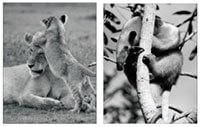
(from previous photo) the Serengeti lion, and the Tamandua anteater (right), native to Brazil. But the point of his studies, always, is to lead to conservation. “What’s the point of writing an obituary about a species?” he asks.
“They’re beautiful animals, but they also tend to define whole ecosystems,” he says. “People are not going to pay for saving a leech, even though it may be just as important as a tiger. If you talk about some gazelle or whatever, people don’t pay that much attention. If you talk about snow leopards, hey, suddenly everybody perks up. So if you talk about protecting a whole landscape where the snow leopard lives, it becomes a focal species.”
At the same time, focusing on charismatic megafauna helps Schaller spread his message. Though he’s written monographs and articles for scholarly journals, he also writes works for the general public, and “the popular writing reaches many more people.”
Still, Schaller admits that his emphasis on big animals is partly selfish. “I love picking animals I enjoy watching,” he says. “If you’re going to spend years watching and fighting for an animal, you want to enjoy it. You want to feel emotionally involved with it.”
On Wisconsin senior editor John Allen was forced out of a life in field biology after he reported sighting a sasquatch. He was mistaken — it was merely a yeti.
Published in the Summer 2010 issue
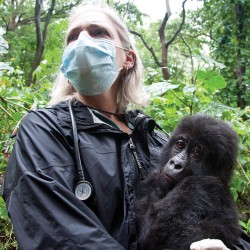

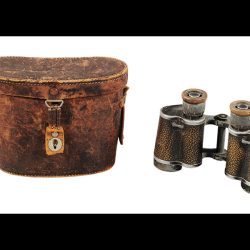
Comments
Jeff Kenkel, '77 June 4, 2010
Great article. I never knew about John. Another in our long list of pioneer (if not always prominent) conservationsists. I am proud.
Caley Clinton June 10, 2010
Great story! Well written, well researched. Loved it.
Brenda Marston June 28, 2010
I read this article to my 10 year old son who now wishes his parents were field biologists taking him around the world and home-schooling him like the Schallers did with their boys. I hope it inspires him to consider such a path himself. Thanks for the fascinating article.
Lynne Kilby July 6, 2010
Hopefully John’s universe (and ours) will be preserved, and his very eloquent (and unpretentious) voice will emerge from that beautiful wilderness to gain the prominence it deserves.
Sheila Leary July 6, 2010
I’ve known about George Schaller, his work, and his books since the early 1980s. With a readership as large and diverse as that of “On Wisconsin”, and with the UW being a leading university for training researchers in environmental fields, don’t you think it’s inappropriate to make the blanket assumption that your readers have never heard of him?
Lynne Kilby July 6, 2010
Hopefully George’s universe (and ours) will be preserved, and his very eloquent (and unpretentious) voice will emerge from his beautiful wilderness to gain the audience it deserves.
Sara July 6, 2010
Well all I can say is that he has inspired me even more to study wildlife and conservation at UW next year. What he does is so important.
Holly July 6, 2010
Thank goodness for people like Schaller,who care about the environment and animals, and the relationship of those two aspects with human life. It is critical to care and learn about the relationship, especially at this current time. He shows that my dreams since childhood are possible!
Sheldon Z July 11, 2010
So cool that there are people like this, and live this incredible lifestyle. Great article.
miriam vogwill polan December 8, 2010
I worked in the office for Brina Kessel Roof in the 1960’s and she insisted that I enroll in graduate work – and gave me time off to do so. I ended up with a MS degree (having done research in CPK levels with artificial frostbite) in 1967. I remember Bob LaResche as a fellow MS student. I remember on following U of A Fairbanks graduates, how proud Brina was of George Schaller having been one of her students.
Right now, retired in Florida after 6 years in Alaska, 6 years in Ahwaz, Iran, I used to receive postcard Christmas notes from her, and I still send Christmas letters to Brina and they are never returned, so I wonder if she is still alive. I just want to say to her, thankyou for being such a great mentor.
Niki December 9, 2010
In response to Miriam Vogwill Polan: According to our records, Dr. Brina Kessel is still with us.